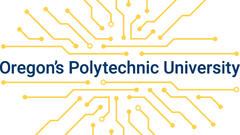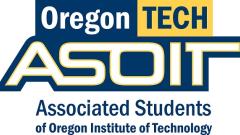Program Accreditation
Oregon Institute of Technology is accredited by Northwest Commission on Colleges and Universities, 8060 165th Ave. NE, Suite 100, Redmond,
WA 98052-3981, an institutional accrediting body recognized by the Council for Higher Education Accreditation and/or the Secretary of the U.S.
Department of Education.
The Diagnostic Medical Sonography, Echocardiography and Vascular Technology programs are programmatically accredited through the
Commission on Accreditation of Allied Health Education Programs (CAAHEP), upon review of the Joint Review Committee on Education in
Diagnostic Medical Sonography (JRC-DMS).
Echocardiography - Goal and Mission Statement
To prepare competent entry-level adult cardiac sonographers in the cognitive (knowledge), psychomotor (skills), and affective (behavior) learning
domains
Diagnostic Medical Sonography - Goal and Mission Statement
To prepare competent entry-level general sonographers in the cognitive (knowledge), psychomotor (skills), and affective (behavior) learning domains
Vascular Technology - Goal and Mission Statement
To prepare competent entry-level vascular sonographers in the cognitive (knowledge), psychomotor (skills), and affective (behavior) learning
domains
Program Mission
The mission of the Radiologic Science Degree Completion Program is to provide ARRT registered Radiologic Technologists a Bachelor of Science degree from a distance education program that furthers the student's knowledge, clinical practice, and performance of examinations while practicing competent patient care and safety in the advanced modalities of Radiologic Technology.
Program Educational Objectives
The objectives of the Radiologic Science Degree Completion Program are to:
- Maintain a degree completion curriculum with emphasis on special modalities.
- Provide a Bachelor of Science degree in Radiologic Science with a core of courses directly applicable to the technologist-student seeking advancement or a leadership role in the profession.
- Further the distance education student's practice of providing compassionate healthcare in the clinical setting.
- Prepare graduates to obtain positions in the advanced modalities, management, sales, applications, education, and other career options available to Bachelor of Science degree graduates.
- Place students in the clinical setting of various modalities, enabling them to gain hands-on experience and form new networks.
- Provide a quality degree program that recognizes the achievement of passing the national registry.
- Address quality of healthcare issues through the continued learning of working professionals.
- Provide a meaningful capstone experience in one or more advanced imaging modalities.
Program Student Learning Outcomes
- Demonstrate knowledge of concepts & principles associated with the operation of special modality imaging machines & equipment.
- Identify arteriographic anatomy and cross sectional images of the head, neck, and torso, for specific accuracy and spelling.
- Demonstrate magnetic field precautions and radiation safety for self, staff, and patients as set forth by the ALARA standards.
- Demonstrate professional judgment and appropriate interpersonal communication with colleagues and superiors.
- Perform clinical examinations in Computed Tomography, Magnetic Resonance, Arteriography, and Mammography or Quality Assurance at the level of competency.
- Identify major disease processes diagnostic to advanced modality examinations.
Summary of Program Student Learning Outcomes
The Medical Imaging Technology faculty formally assess the student learning outcomes summarized in the annual program assessment report. Additional details can be found in department assessment records.
Program Curriculum Map
The curriculum map for the Radiologic Science Degree Completion program can be found on the catalog web page on the Oregon Tech website, www.oit.edu/catalog.






